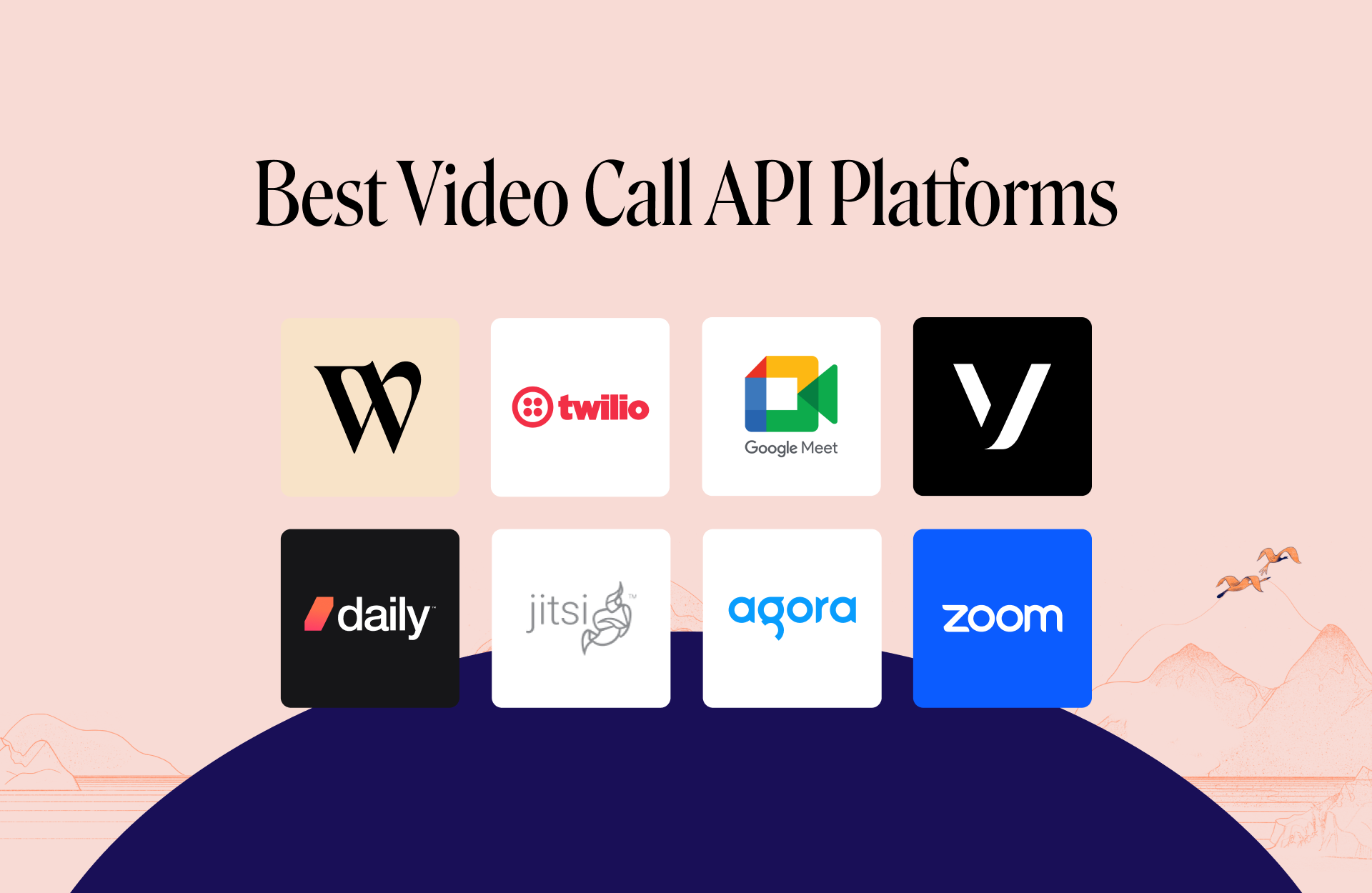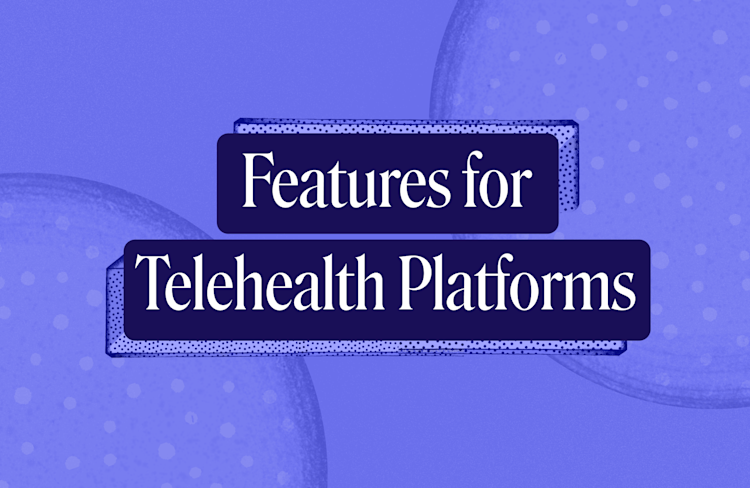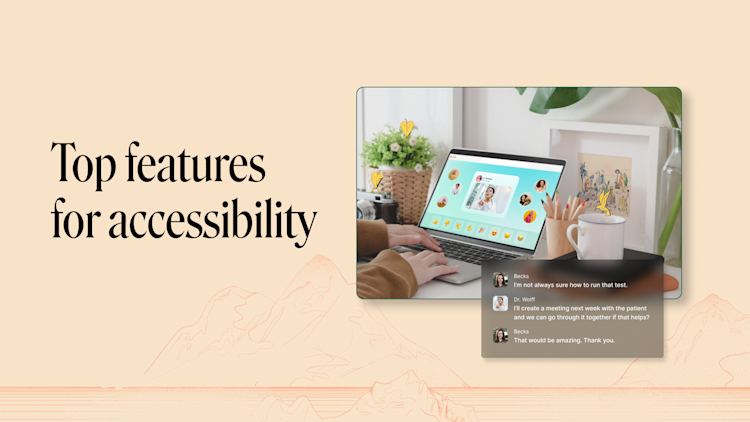The Best Video Call API and SDK Platforms
Looking to embed video calling directly into your product or platform? Here are the top 8 video call API and SDK options to choose from.

Looking to embed video calling directly into your product or platform? Whether you're scaling a telehealth or an eLearning platform, choosing the right video call API provider is an important decision, and the multiple options can feel overwhelming.
To help you make an informed decision, we’ve analyzed the most popular video call API platforms in the market today and broken them down in this article. Keep reading to see which option is best for your team.
What to look for when choosing a video call API
Here are the most important factors to evaluate before you commit to an option:
Ease of Integration: Look for platforms that offer clear documentation and quick-start options like pre-built UIs. The faster you can build, integrate, and test, the faster you can launch.
Scalability: Your video solution should grow with your user base. Make sure the provider supports high participant limits, global infrastructure, and performance optimization at scale.
UI Flexibility: Some APIs offer prebuilt UI components, while others give you full control. Choose based on how much customization you need. For instance, you should be able to choose between a branded meeting room or a fully customized interface.
Global Reliability: Low latency and high video quality depend on a provider’s infrastructure. Prioritize APIs with global mesh or edge networks that ensure smooth experiences worldwide.
Security & Compliance: If you’re in a regulated industry like healthcare, ensure the platform supports compliance standards such as HIPAA or GDPR. End-to-end encryption is also a key differentiator.
Transparent Pricing: Watch out for hidden fees, especially around usage-based models. Look for providers that offer clear, predictable pricing and generous free tiers to prototype with.
Support & SLAs: Solid onboarding support and clear business-level agreements (BAAs) can save you from future headaches. Especially important if you’re embedding video into critical workflows. Choose a video conferencing solution that has clear documentation, helpful developer communities, and ongoing technical support.
The best embedded video call APIs
Here’s a breakdown of the top 8 video call APIs and SDKs to choose from. They include: Whereby, Twilio, Vonage, Zoom SDK, Jitsi, Daily, Google Meet API, and Agora.
We'll explore their key features, pricing, and user feedback to help you determine the best fit for your team.
1. Whereby Embedded
Whereby Embedded is a video call API that makes it incredibly simple to add high-quality video calls to your app or website. With just a few lines of code, developers can create branded, integrated meeting experiences for all device types without complex infrastructure.

This makes it ideal for product teams who want to ship quickly and scale confidently without sacrificing design or the user experience. It also emphasizes privacy, security, and HIPAA compliance, making it a strong fit for telehealth platforms.
Key features
Simple no-code/low-code setup
Choose between the prebuilt UI or full customization with the SDK
Privacy-first with European hosting, ISO 27001 certification & HIPAA and GDPR compliance
Transparent pricing with a free plan to test and generous usage tiers starting at $9.99/month
Scalable WebRTC infrastructure
Robust developer documentation and Discord community support
Other features like transcriptions, cloud recording, chat downloads, file sharing, and more.
Pros:
User-friendly interface
Quick setup and deployment
High-quality video and audio
No downloads or installations required for the end user.
Cons: There’s limited access to dial-in calls as this feature is still in closed beta.
2. Vonage Video
Vonage Video offers a robust video call API platform with strong cross-platform support and features like screen sharing, SIP interconnect, and large-scale video engagement. It's suitable for businesses that require enterprise-grade video applications and advanced video capabilities.
Key features
Comprehensive set of features for enterprise needs, like interactive broadcast, and up to 16,000 participants on a call.
Scalable WebRTC infrastructure
Advanced moderation and analytics tools
Broadcast in WebRTC, HLS/LL-HLS, and RTMP for social media platforms
Support for HIPAA-compliant implementations
Pros: Reliable performance and scalability, 5G infrastructure, and multiple global region coverage.
Cons: There’s a lot of legacy infrastructure from previous acquisitions, so the deep integration process can be complex for developers. This also makes it hard to switch. Vonage is also known for its ticketing support system, which means there’s no priority support without additional charges.
3. Twilio Video
Twilio Video is part of Twilio's comprehensive communication platform, offering extensive APIs for real-time communication. It's designed to handle everything from simple video chats to complex multi-participant interactions.
Key features
Programmable Rooms API for custom experiences
Fine-grained control over video and audio streams
Robust developer documentation and community support
Pros
Highly customizable and scalable
Reliable with minimal downtime
Comprehensive suite of communication APIs.
Cons
Steeper learning curve for integration
Usage-based pricing can become unpredictable at scale.
Some users have reported challenges in integrating this SDK with React Native mobile apps.
Competing priorities across communication products make them less focused on improving the video call API. Interestingly, they announced sunsetting the video product in the past, but changed course after.
Some reviews have mentioned that it can be difficult to get human support from their team.
4. Zoom
Zoom Meeting APIs allow developers to interface with Zoom Meetings and webinars programmatically. Zoom also has a meeting SDK where you can choose to embed Zoom-branded experiences into your application, website, platform, or service. Alternatively, you can use the Video SDK, which allows you to get Zoom’s video infrastructure without the UI.
This makes it a great option if you want Zoom but full control over how video is integrated into your product or platform.
Key features
Access to Zoom’s globally distributed infrastructure
Support for iOS, Android, Web, Windows, and macOS
Raw audio and video data access for advanced use cases
Interactive whiteboarding and in-meeting reactions
Encryption and security are inherited from Zoom's enterprise-grade platform
Pros:
Zoom is a popular video calling solution because it’s reliable and scalable.
It offers cross-platform SDKs.
Users have reported great analytics and usage metrics.
Cons:
Zoom's Meeting SDK requires loading and initialization through JavaScript and deployment to a server you own.
The company recently rebranded as an AI-first company, which makes its video-calling product less of a priority.
Customer and developer support comes at an additional cost (between $675-2900/month).
At this point, Android WebView does not have support for SharedArrayBuffer. This means some features (like background noise suppression, 720p video resolution, and virtual backgrounds) will not work in apps and browsers using Android WebView, such as Opera Mini.
5. Agora video calling
Agora offers a comprehensive suite of APIs and SDKs designed to embed real-time voice, video, and interactive streaming into applications across various platforms, including web, iOS, Android, and desktop.
Its robust global edge network ensures low-latency and reliable communication, making it suitable for applications in education, gaming, and more.
Key features
Ultra-low latency with adaptive bitrate streaming
Cross-platform support, including Unity and Unreal Engine
AI-powered noise suppression and voice enhancement
Extensive documentation and developer resources
Comprehensive analytics and monitoring tools
Pros:
Agora video calling has a scalable infrastructure that currently supports millions of concurrent users.
It has a rich feature set suitable for diverse use cases.
This platform has a generous free tier offering 10,000 minutes/month.
Cons
There are additional charges for features like the interactive whiteboard, recording, and analytics.
There’s also limited flexibility in some UI components.
Users on third-party review sites have reported challenges with integration and customization.
Getstream mentions that Agora operates from China with a VIE entity, which may be a deal-breaker for some prospective clients.
6. Daily
Daily offers a fast, modern video call API with a quick setup time and reliable global performance. However, since it’s very limited in features compared to the other options on this list, it's suitable for product teams building remote collaboration or support tools.
Key features
Easy to get started with one-click rooms
Powerful headless API for custom UIs
Global SFU infrastructure
Pay-as-you-go pricing model with 10,000 participant minutes free
Pros:
Daily offers simple API and SDKs that facilitate smooth integration. This makes it fast to deploy video functionalities.
It also has very flexible pricing options with a free 10,000 participant minutes every month.
Cons:
Users report that advanced use cases may also require deeper integration work.
Also, lately, Daily has been focused on its AI Voice Agents, which makes the core video capabilities seem like less of a priority.
Although the developer community is free to join, on the pricing page, accessing support comes at an additional cost (starting at $1500/month).
7. Jitsi as a service
Jitsi as a Service (JaaS) is the commercial, hosted version of the open-source Jitsi Meet platform, run by 8x8. It gives teams all the flexibility and openness of Jitsi but with the infrastructure, support, and scalability needed for production-grade applications.
You get prebuilt meeting UIs, ready-to-go integrations, and options for embedding video into your app or website, without managing servers or infrastructure.
It’s great for startups, nonprofits, or open-source-focused teams that want a privacy-conscious video solution without the overhead of building from scratch.
Key features
Based on the open-source Jitsi Meet project
Fully hosted by 8x8 — no need for DevOps or server maintenance
Prebuilt and customizable UI
Token-based authentication and role-based access
Built-in features like chat, screen sharing, and lobby moderation
Pros:
It’s fast to integrate.
Jitsi is a trusted brand thanks to its open-source roots.
There are several security features, like encrypted meetings.
It has affordable pricing, as well as well-documented APIs and SDKs.
Cons:
At this time, the UI customization is limited.
Some customers have reported that there are fewer enterprise features, like in-depth analytics or quality monitoring.
Also, they mention that performance may vary depending on region and participant count.
8. Google Meet Rest API
The Google Meet REST API lets you integrate video meeting functionality into your app. You can create and manage meeting spaces and retrieve details about a meeting or conference using its resource name.
The API also allows you to get a list of participants and their session data. Additionally, you can access meeting details such as recordings, transcripts, and individual transcript entries.
Key features
You can create and pre-configure meetings.
Get a meeting space or conference by resource name.
Get a list of participants and participant sessions.
Get meeting recordings, transcripts, and transcript entries.
You can also incorporate other Google APIs, like Chat API, into your app for further collaboration.
Pros:
This API integrates smoothly with other Google Workspace applications
It’s designed to be scalable, especially for handling a large number of meetings and participants
You can retrieve information about specific meetings, including participants, start and end times, and other relevant data
Cons:
There is no option to embed Google Meet or customize the UI.
Because the Google Meet REST API is a shared service, there are quotas and limitations. You can request a quota increase, but large quota increases can take longer to be approved.
Final Thoughts: Which Video Call API Is Right for You?
With so many capable video call APIs on the market, the right choice depends on your team’s goals, technical resources, and how central video is to your product experience.
Some platforms offer deep customization and enterprise scalability; others lean into open-source transparency or low-cost flexibility. But not all are built with simplicity, privacy, and user experience in mind from day one.
If you're looking for:
A developer-friendly platform that gets you up and running fast.
Built-in privacy by design and full GDPR compliance
WebRTC-powered video for low latency and zero downloads
Reliable performance and elegant UX, especially for privacy-sensitive use cases like telehealth, remote consultations, or in-product video calls,
then Whereby Embedded is built for you. You can try it out for free here.


